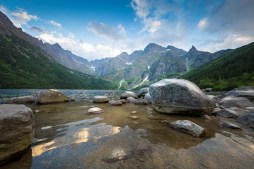How Cultural Movements Influenced the Evolution of Landscape Art
The evolution of landscape painting reflects a rich tapestry woven from cultural movements, historical events, and individual artistic innovations. This genre, which captures the beauty of nature and its intricate relationship with humanity, has transformed significantly over centuries. In this article, we will explore how various cultural movements have influenced landscape art throughout history.
The Early Beginnings: From Ancient to Medieval Landscapes
Landscape painting dates back to ancient civilizations such as Egypt and Greece, where backgrounds in artworks featured landscapes primarily for narrative purposes. However, it wasn’t until the medieval period that landscapes began to be appreciated for their aesthetic value. During this time, artists incorporated natural elements into religious contexts, emphasizing spiritual connections between man and nature.
Renaissance: A Shift in Perspective
The Renaissance marked a significant turning point in the evolution of landscape painting. With an increased focus on humanism and the natural world as a reflection of divine creation, artists like Leonardo da Vinci and Raphael began to treat landscapes as integral components of their compositions rather than mere backdrops. This era introduced techniques such as aerial perspective that enhanced realism and depth in landscape art.
Romanticism: Emotions Take Center Stage
During the late 18th to mid-19th century, Romanticism emerged as a response to industrialization and rational thought. This movement celebrated emotion, nature’s sublime beauty, and individual experience. Artists like Caspar David Friedrich and J.M.W. Turner depicted dramatic weather conditions and grandiose landscapes that conveyed feelings of awe or melancholy—showcasing the power of nature against mankind’s insignificance.
Impressionism: Capturing Fleeting Moments
In the late 19th century, Impressionism revolutionized landscape painting by introducing innovative techniques that captured light and color with spontaneity. Artists such as Claude Monet focused on plein air painting—working outdoors to capture moments in time under varying conditions—resulting in vibrant depictions of gardens, riverscapes, and rural scenes characterized by loose brushwork.
Modernism: Breaking Traditions
As modernism took hold in the early 20th century, artists began to challenge traditional representations of landscapes through abstraction and new perspectives. Movements like Cubism introduced fragmented forms while Expressionist painters emphasized emotional resonance over realistic portrayal. This period opened doors for diverse interpretations of landscapes—ranging from Van Gogh’s emotive swirls to Georgia O’Keeffe’s stylized desert scenes.
Today’s landscape art continues to evolve with influences from technology, environmental concerns, and contemporary societal themes. Artists blend traditional techniques with modern practices such as digital media or photography while also incorporating messages about climate change or urbanization into their work. The journey through history reveals not just an evolution of style but also a mirror reflecting our changing relationship with nature.
This text was generated using a large language model, and select text has been reviewed and moderated for purposes such as readability.


